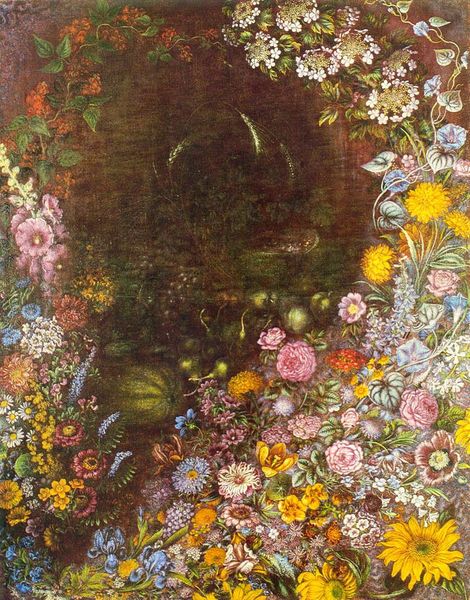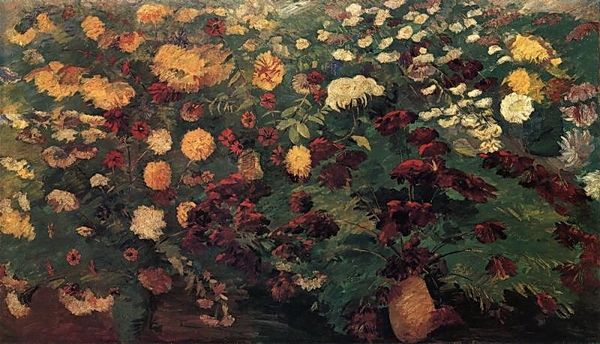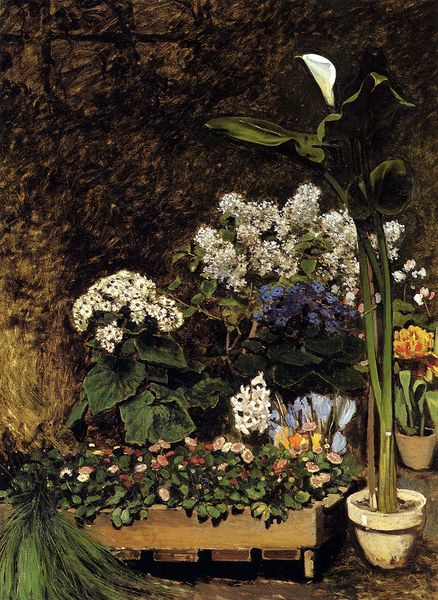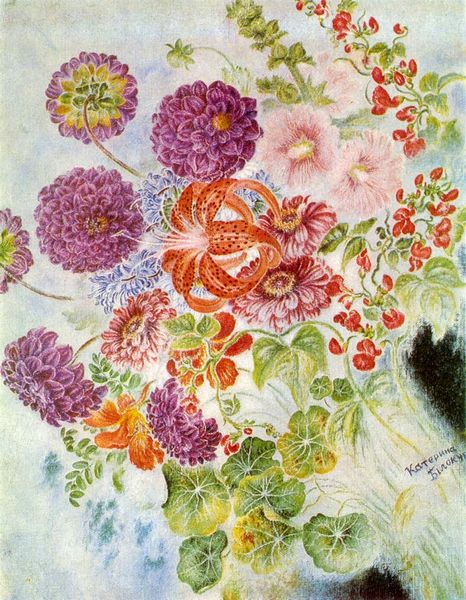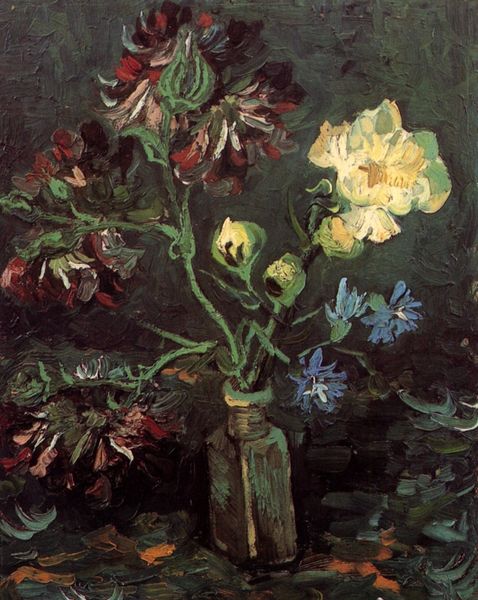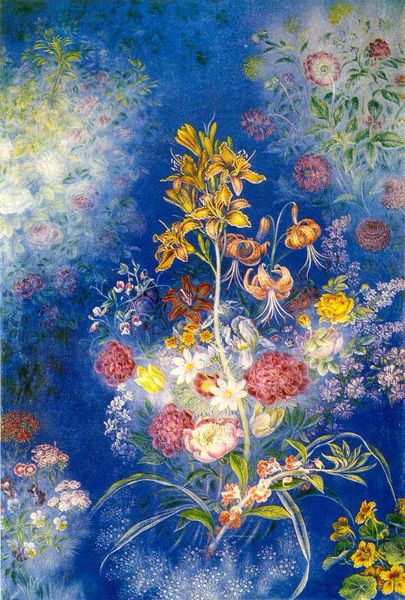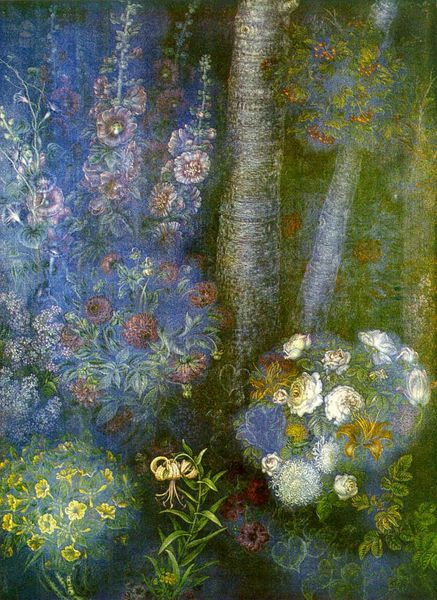
Arum and Conservatory Plants 1864
0:00
0:00
pierreaugusterenoir
Oskar Reinhart Foundation, Winterthur, Switzerland
painting, plein-air, oil-paint
#
still-life
#
painting
#
impressionism
#
plein-air
#
oil-paint
#
flower
#
oil painting
#
plant
Copyright: Public domain
Editor: So, this is Renoir’s "Arum and Conservatory Plants," painted in 1864 with oil on canvas. I'm struck by the sheer volume of plant life, and the visible brushstrokes; it feels less concerned with precise representation and more with capturing the textures and colors. What stands out to you when you look at this? Curator: I'm drawn to the very means of production here. Oil paint wasn’t cheap; what does it signify about the culture and potential patronage behind a piece like this from the mid-19th century? The application itself is interesting – thick impasto in places, looser washes elsewhere. It demonstrates an evolving material process, still rooted in older techniques but pushing towards something new, right at the precipice of Impressionism. How does this reflect the artist's position within the art market and the changing demands of collectors? Editor: That's fascinating. So you’re saying that the way he's *using* the paint speaks to a shift in how art was being made and consumed? Curator: Precisely. Think about what was considered 'art' versus 'craft' then. Landscapes and still lifes had their own market niche, of course, but Renoir is arguably blurring those lines here. He elevates everyday scenes to high art by using fine materials. The *quality* of labor here is being emphasized. Also, observe how much is obscured within shadow. Are we meant to focus on the flowers presented at the front of the plane or is Renoir playing on accessibility and viewership through material choices and technique? Editor: I see what you mean. The choice of subject matter, coupled with his specific way of working with oil paint... it’s all tied to social and economic forces. I hadn’t considered the nuances of those factors being embedded in the medium itself! Curator: Exactly! We're looking at more than just pretty flowers; we're witnessing a material negotiation of value, taste, and artistic labor in mid-19th century France.
Comments
No comments
Be the first to comment and join the conversation on the ultimate creative platform.

